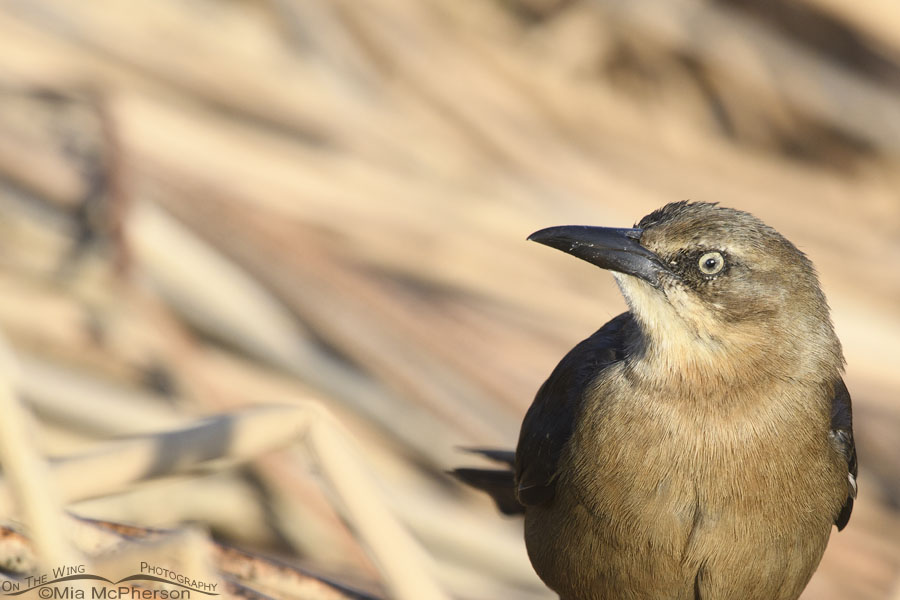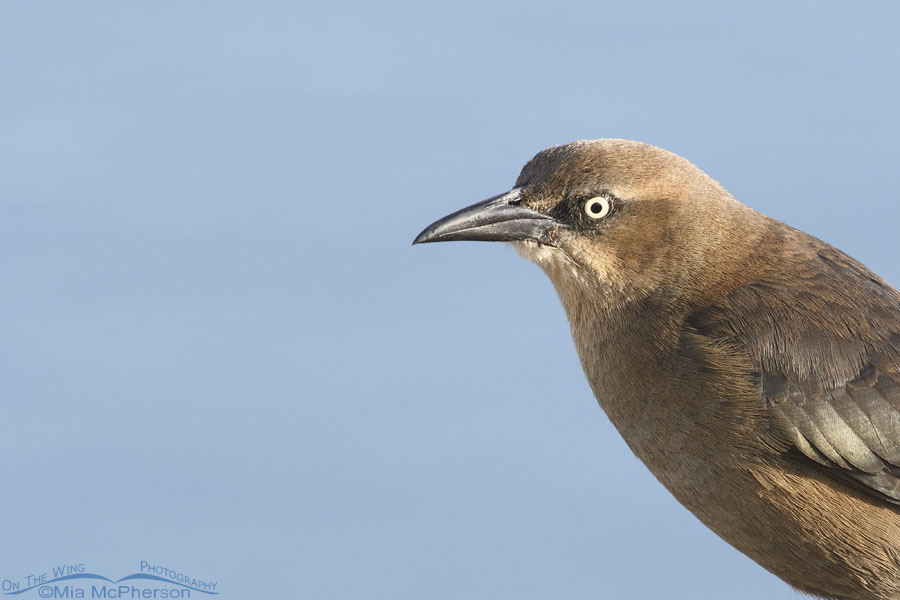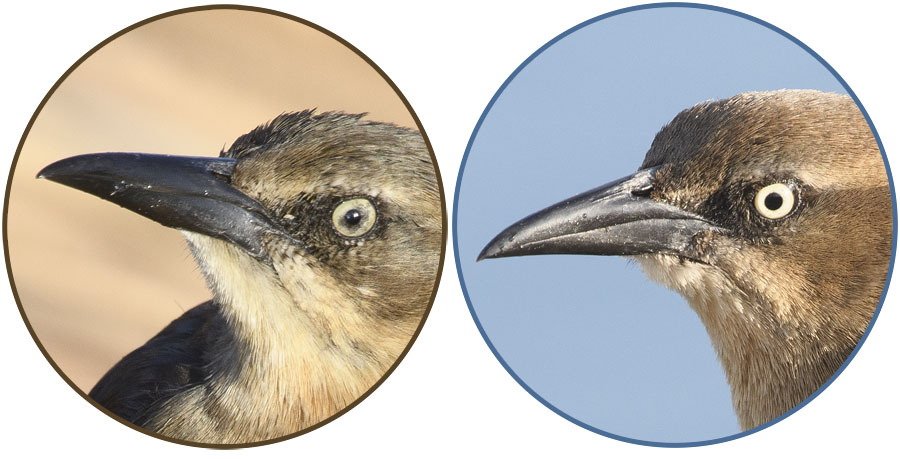While I photographed Common Loons at my local park this month I also took some female Great-tailed Grackle images and today I am sharing two of them. The reason I’m sharing them is that I noticed variations in the irises of the two female grackles.
 Spring female Great-tailed Grackle portrait – Nikon D500, tripod mounted, f8, 1/640, ISO 640, +0.7 EV, Nikkor 500mm VR with 1.4x TC, natural light
Spring female Great-tailed Grackle portrait – Nikon D500, tripod mounted, f8, 1/640, ISO 640, +0.7 EV, Nikkor 500mm VR with 1.4x TC, natural light
When I photographed this female Great-tailed Grackle I noticed that her iris wasn’t a clear, light yellow. Her irises had brown, almost cloudy areas that caught my attention. This female Great-tailed Grackle was at the edge of a pond and she appeared to be looking for nesting material.
 Spring female Great-tailed Grackle close up – Nikon D500, tripod mounted, f7.1, 1/400, ISO 640, +1.0 EV, Nikkor 500mm VR with 1.4x TC, natural light
Spring female Great-tailed Grackle close up – Nikon D500, tripod mounted, f7.1, 1/400, ISO 640, +1.0 EV, Nikkor 500mm VR with 1.4x TC, natural light
Two days later I photographed another female Great-tailed Grackle who also appeared to be looking for nesting material. Her irises were light yellow, clear and showed no evidence of brown areas.
When I compared the two female Great-tailed Grackle portraits and looked closely at the irises of both birds I wondered why there was a difference.
 Female Great-tailed Grackle Iris Variation
Female Great-tailed Grackle Iris Variation
The female grackle on the right with water in the background is an adult. The female on the left is most likely a first spring, female Great-tailed Grackle, meaning she hatched last year. Their eyes start off brown as chicks and over time become pale yellow. Her head feathers are wet from poking her head into the water.
I appreciated getting these close up images of both female Great-tailed Grackles so that I could easily compare the eyes and irises of both birds. As I have mentioned before I love being able to take portraits because fine details are easier to see in them. I never pass on taking portraits of my subjects when they come in close to me.
Life is good.
Mia
Click here to see more of my Great-tailed Grackle photos plus facts and information about this species.


What a great, great post. Thanks for the tutorial in “aging” grackles. Curious people are my absolute favourite friends because everything in life is more interesting when you approach it with curiosity.
Fascinating. Thank you for your eye for detail and stunning photographs of it too.